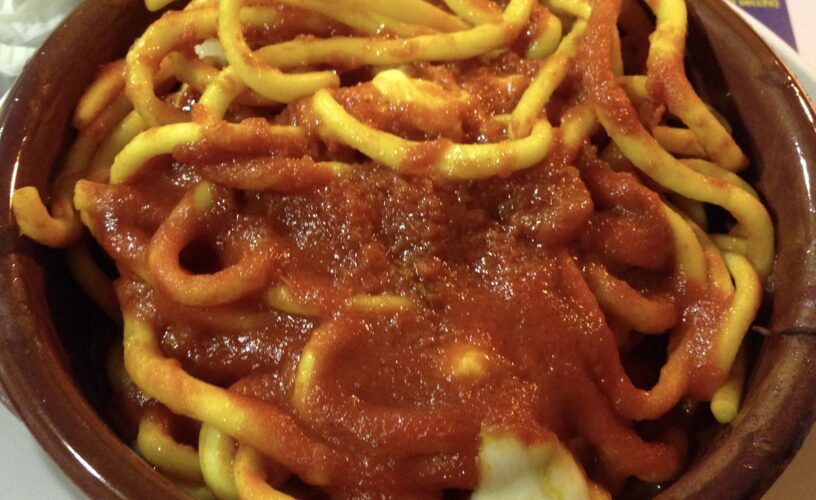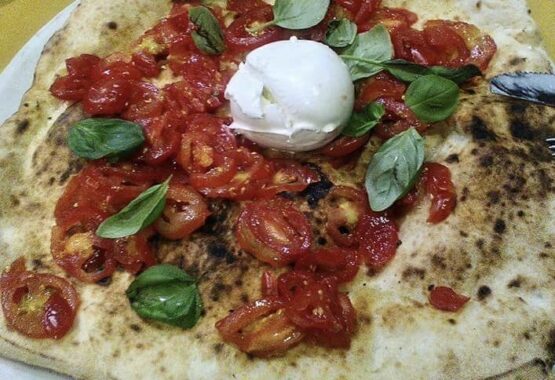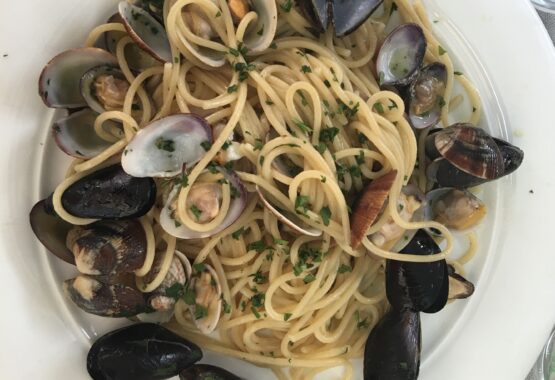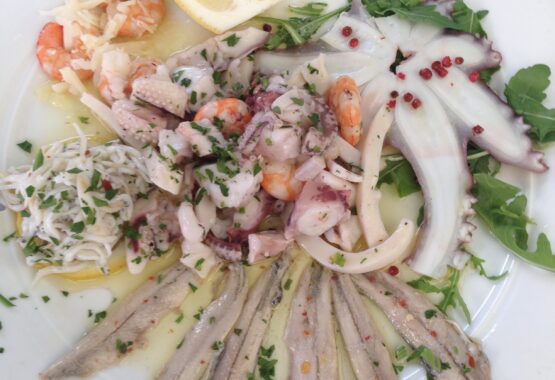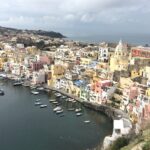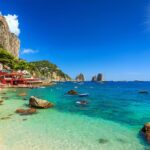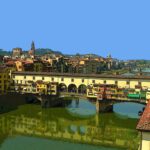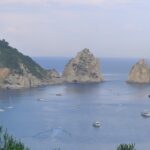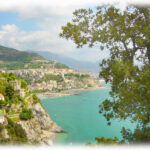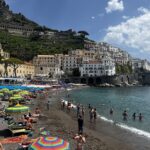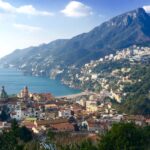When most people think of fusilli, they think of the short, spiral-shaped pasta found commonly in the supermarket. But in the southern Italian tradition, particularly in Campania, fusillo is a pasta belonging to the maccaruni pertusati family of noodles with a hole in the middle (in the past the term “maccheroni” was used for all pasta that was not formed from flat sheets, and still today is used in many Italian regions to refer to long pasta).
In the Cilento area of Campania, fusilli are an everyday, rustic dish, but the version from Felitto takes much longer to make, is larger and uses a richer dough. Here, fusilli are prepared for special occasions: Easter, Christmas, Carnival, the feast of Madonna and Saint Vitus, the town’s patron saint. The dough is made from durum-wheat semolina flour (traditionally Saragolla wheat was used, then from the start of the 1900s, Senatore Cappelli) and a large number of eggs (between 6 and 8 per kilo of flour). No water is added to authentic Felitto fusilli, just a drizzle of extra-virgin olive oil on the hands during the last phase of kneading. According to local tradition, on the evening of Carnival, some of the cooked fusilli would be set aside for the next day—the start of Lent—and offered to the chickens in the hopes of bringing fertility.
The skill of the local women lies in being able to work the stiff dough, divide it by eye, shape it and cut it into strips called cinguliate, then form them by hand into cylindrical ropes ready for hollowing out with a metal rod. The rod is made from steel and is very thin (just a millimeter in diameter). The rods used to be salvaged from old umbrellas, but now a few local artisans can make them using a hammer. The rod is pushed into each dough rope to make a hole, then with rapid gestures the dough is stretched until it is as long as 20 centimeters or more.
As soon as the fusilli are unthreaded from the rod, they are hung up to dry, carefully lined up, ensuring that the straight shape and central hole are maintained. According to tradition, after cooking they are served with a sauce of castrated goat meat (or more rarely of mutton) and a sprinkling of pecorino or Cilentana goat cacioricotta.
Day 1 – Arrive in Athens
 The most pleasant weather occurs in May-June and September-October. The warmest time of the year starts in mid-July and generally lasts until mid-August, when the annual meltémi winds from the north cool the country. Mid-July to mid-August is the height of summer, and the midday sun tends to get very strong; during this time, most Greeks avoid heavy physical activity outdoors between 1:00 and 5:00 PM.
The most pleasant weather occurs in May-June and September-October. The warmest time of the year starts in mid-July and generally lasts until mid-August, when the annual meltémi winds from the north cool the country. Mid-July to mid-August is the height of summer, and the midday sun tends to get very strong; during this time, most Greeks avoid heavy physical activity outdoors between 1:00 and 5:00 PM.
Day 2 – Full Day Athens Tour
 Summer evenings tend to be very rewarding. As strong as the sun may get on a summer afternoon, the low levels of atmospheric humidity in most areas of the country prevent the air from trapping much heat, and temperatures tend to dip to very pleasant levels in the evenings. But even during midday, high temperatures actually tend to be quite comfortable as long as the time is not spent doing a lot of walking or other physical activity.
Summer evenings tend to be very rewarding. As strong as the sun may get on a summer afternoon, the low levels of atmospheric humidity in most areas of the country prevent the air from trapping much heat, and temperatures tend to dip to very pleasant levels in the evenings. But even during midday, high temperatures actually tend to be quite comfortable as long as the time is not spent doing a lot of walking or other physical activity.
Day 3 – Fly to Corfu
 While the Mediterranean climate characterizes most of the country, there are two other climate systems that are present. One is the cool Alpine climate which is found on mountainous areas of the country’s interior, including many high-altitude valleys. Another system is the Continental climate found on the interiors of north-central and northeastern Greece, and gives those areas very cold winters and warm, relatively humid summers.
While the Mediterranean climate characterizes most of the country, there are two other climate systems that are present. One is the cool Alpine climate which is found on mountainous areas of the country’s interior, including many high-altitude valleys. Another system is the Continental climate found on the interiors of north-central and northeastern Greece, and gives those areas very cold winters and warm, relatively humid summers.
Day 4 – Fly Back Home
Athens’ Elefthérios Venizélos International Airport located near the Athens suburb of Spáta is the country’s largest, busiest airport and main hub, handling over 15 million passengers annually as of 2006. Other major international airports in terms of passenger traffic are, in order of passengers served per year, Heraklion (Nikos Kazantzákis Int’l), Thessaloniki (Makedonia Int’l), Rhodes (Diagóras), and Corfu (Ioánnis Kapodístrias).
Image Gallery
Video
Important Information
Price Includes
- Round trip airport or train station transfers.
- 4 nights accommodation in aparthotel in London.
- Breakfast daily.
- Day touring as per the itinerary.
Price Excludes
- Round trip airport or train station transfers.
- 4 nights accommodation in aparthotel in London.
- Breakfast daily.
- Day touring as per the itinerary.
Terms & Conditions
Prices are “from”, per person, based on 2 adults and 2 children (under the age of 12) sharing, and include all taxes. Subject to availability. 4 nights’ accommodation in an aparthotel in London. Breakfast daily. Day touring as per the itinerary.
